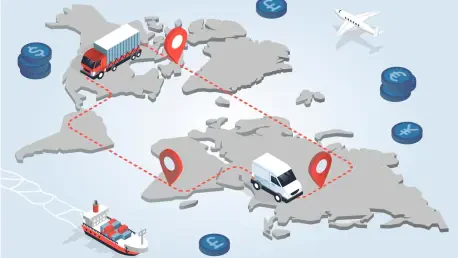The global trade and logistics industry is undergoing transformative developments, notably marked by increasing modernization through technological advancements and evolving labor standards. As countries strive to enhance their competitiveness, emerge as global leaders, and navigate regulatory challenges, Mexico has made significant strides by introducing new labor competency standards aimed at streamlining its workforce in the logistics sector. This move positions Mexico at the forefront of embracing global trade demands, reflecting a commitment to elevating its market standing through innovation and efficient practices.
Overview of the Global Trade and Logistics Industry
The global trade and logistics industry plays a crucial role in facilitating international commerce, encompassing diverse market segments such as transportation, warehousing, and supply chain management. Recent years have witnessed significant technological influences that have reshaped the industry, such as automation, blockchain technology, and IoT, which enhance operational efficiency. Dominant market players in this space include multinational logistics firms and emerging digital platforms revolutionizing delivery systems. Additionally, regulatory frameworks are evolving, with increased focus on sustainability and security measures, leading to more stringent industry standards.
Current Trends and Future Projections
Major Trends Shaping the Industry
The industry has seen the rise of transformative trends, notably the integration of artificial intelligence, big data analytics, and automated systems. These technologies are setting new benchmarks for efficiency and are expected to redefine operational excellence. Consumer behaviors are shifting towards seeking faster, more reliable services, pushing logistical services to innovate continuously. Opportunities in the industry are vast, with e-commerce driving demand and the need for greener, sustainable logistics practices opening up new paths of development.
Market Analysis and Future Outlook
Data reveals a robust growth trajectory for the global trade sector, with projections indicating steady expansion driven by technological advancements and globalization. Performance indicators show a gradual rise in trade volumes and transportation demands, with further acceleration anticipated. The future outlook reflects a promising landscape, with forecasts suggesting revolutionary changes powered by technology, contributing to increasingly efficient and secure trade operations.
Challenges in the Trade and Logistics Sector
The trade and logistics sector is not without challenges, facing complexities like rapidly changing technology, regulatory requirements, and market volatility. Technological implementation poses significant trials in adoption and integration within existing systems. Regulatory compliance is a persistent challenge, requiring constant adaptation to meet international standards. Addressing these issues may involve strategic technological partnerships, a focus on sustainable operations, and consistent policy analysis to preemptively adapt to new regulations.
Regulatory Framework and Labor Standards
The regulatory landscape in the logistics sector includes diverse laws and standards impacting operations globally. Mexico’s introduction of new labor competency standards exemplifies how regulations can shape workforce capabilities and align with international expectations. Compliance is paramount, with security measures aimed at reducing risks and fostering safer trade environments. As the industry grapples with regulatory changes, it necessitates robust strategies to harmonize compliance with operational efficiency.
Future Directions and Innovations
Looking ahead, the logistics industry is poised for remarkable advancements, with groundbreaking technologies like artificial intelligence and cybersecurity taking center stage. These innovations are expected to trigger significant transformations in operational frameworks and consumer experiences. Market disruptors, such as digital freight platforms, are challenging traditional practices, while economic conditions will shape investment in infrastructure and technology. Innovations will crucially drive the industry’s mission to provide seamless global trade solutions, shaping future growth pathways.
Conclusion and Strategic Recommendations
The findings suggest significant potential for Mexico to lead in global trade through strategic adaptation of new labor standards, fostering a competitive and skilled workforce ready for the modern challenges of the logistics sector. Moving forward, Mexico and global industry players should concentrate on pursuing innovation, investing in technological infrastructure, and ensuring adaptable regulatory practices to stay competitive. Additional focus on developing comprehensive competency programs and strengthening international partnerships can further bridge the gap between current capabilities and forthcoming industry demands, significantly enhancing the future trajectory of global trade and logistics.









